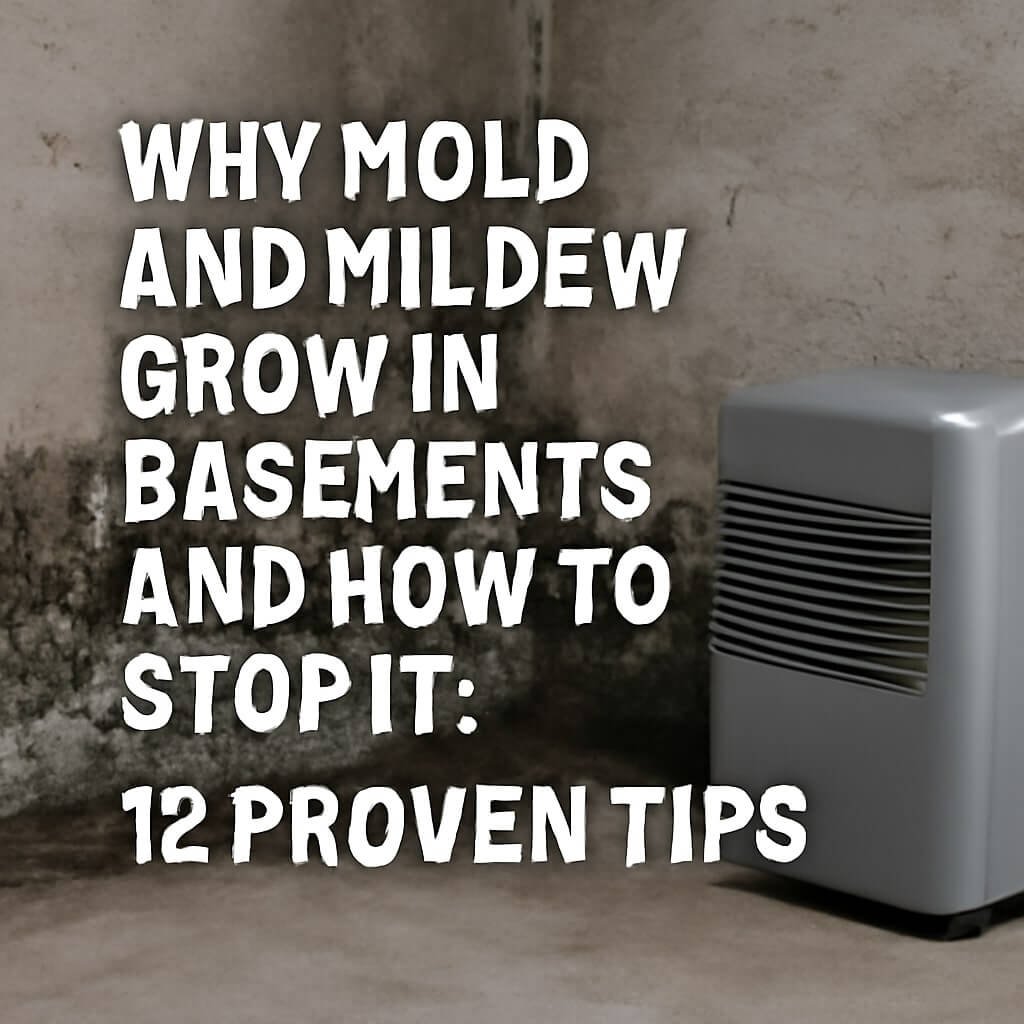Basements are prime spots for mold and mildew growth, and understanding why this happens is the first step toward stopping it. In this detailed guide, we’ll explore the common causes of mold and mildew in basements, the risks they pose, and, most importantly, 12 proven tips to keep your basement mould-free and healthy. Whether you’re a homeowner or renter, this comprehensive article will equip you with everything you need to know about preventing and managing these persistent problems.
Understanding Mold and Mildew: What They Are and How They Thrive

Mold and mildew are types of fungi that thrive in damp, dark, and poorly ventilated areas—exactly like most basements. Mold usually appears as fuzzy patches that come in colors ranging from black and green to white and orange. Mildew, on the other hand, tends to be powdery or fluffy, typically white or gray.
Both mold and mildew reproduce through spores, which travel through the air and settle in moist environments. Once these spores land on surfaces with enough moisture, they start to grow and multiply. This growth can cause structural damage to your basement and create an unhealthy living environment.
Common Causes of Mold and Mildew Growth in Basements
Understanding what causes mold and mildew is key to prevention. Basements provide an ideal environment for their growth because of several interconnected factors:
Excess Moisture and Humidity
Basements often have high humidity levels, sometimes exceeding 60%, which creates the perfect breeding ground for mold. Moisture can come from groundwater seepage, condensation on cold walls and floors, or indoor activities that generate humidity.
Poor Ventilation
Basements typically have limited airflow, which traps moisture and stale air. Without proper ventilation, humidity stays high, and spores settle more easily.
Water Leaks and Flooding
Leaks from pipes, foundation cracks, or flooding can introduce large amounts of water. Even small leaks left untreated can keep the basement continuously damp, encouraging mold growth.
The Health Risks of Mold and Mildew Exposure
Mold and mildew aren’t just unsightly; they can cause serious health problems. Exposure can lead to allergic reactions, respiratory issues, headaches, and skin irritation. People with asthma, allergies, or weakened immune systems are especially vulnerable. Prolonged exposure to certain toxic molds can even lead to more severe health complications.
Signs and Symptoms of Mold and Mildew in Your Basement
Detecting mold early can save you from costly repairs and health risks. Common signs include:
- Musty or earthy odors
- Visible discolouration or patches on walls, floors, or ceilings
- Peeling paint or wallpaper
- Damp spots
- Allergic symptoms that worsen when in the basement
Step 1: Inspect and Identify Mould-Prone Areas
A thorough inspection is the first step. Check behind furniture, around plumbing, near windows, and along foundation walls. Use a flashlight and protective gloves, and if you spot mold, test kits or professional inspections can help assess the severity.
Step 2: Control Moisture to Prevent Mold Growth
Controlling moisture is crucial. Here’s how:
Using Dehumidifiers
A quality dehumidifier can lower basement humidity to safe levels (30-50%). Make sure to empty the water collection regularly and maintain the unit for optimal performance.
Improving Basement Drainage
Ensure gutters and downspouts divert water away from your foundation. Consider installing French drains or sump pumps if water pooling is an issue.
Step 3: Enhance Basement Ventilation
Improving airflow can significantly reduce mold risk. Open windows when possible, install exhaust fans, or use air circulators. Ventilation helps dry out damp areas and lowers humidity.
Step 4: Repair Water Leaks and Seal Cracks
Fix leaks promptly, whether from plumbing or the foundation. Use waterproof sealants to close cracks and prevent water infiltration. Regular maintenance prevents small problems from becoming major mold sources.
Step 5: Use Mould-Resistant Products and Materials
If renovating or building, opt for mould-resistant drywall, paints, and insulation designed for damp environments. These materials inhibit mold growth and add a layer of protection.
Step 6: Regular Cleaning and Maintenance
Clean your basement routinely with mold-killing solutions like vinegar or commercial cleaners. Avoid carpet in damp areas, and check regularly for signs of water damage or mold.
Professional Mold Remediation: When to Call the Experts

Sometimes mold infestations are too severe for DIY fixes. If mold covers large areas, or if you have health concerns, hire certified mold remediation professionals. They have the equipment and expertise to safely and effectively remove mold.
Preventive Habits to Keep Your Basement Mold-Free Year-Round
Keep these habits in mind:
- Monitor humidity with a hygrometer
- Use waterproof storage bins instead of cardboard boxes
- Regularly inspect for leaks
- Avoid drying clothes in the basement
- Keep gutters clean and properly directed
Frequently Asked Questions (FAQs)
What causes mould and mildew specifically in basements?
Can mold in basements affect my health?
How often should I check my basement for mold?
Are dehumidifiers really effective against mold?
What are the best mold-resistant materials for basements?
When is professional mold removal necessary?
Conclusion: Taking Control of Mold and Mildew in Your Basement
Mold and mildew in basements are common but manageable problems. By understanding the causes, identifying early signs, and following these 12 proven tips, you can keep your basement dry, safe, and mold-free. Regular maintenance, moisture control, and timely repairs will protect your home and health for years to come.



